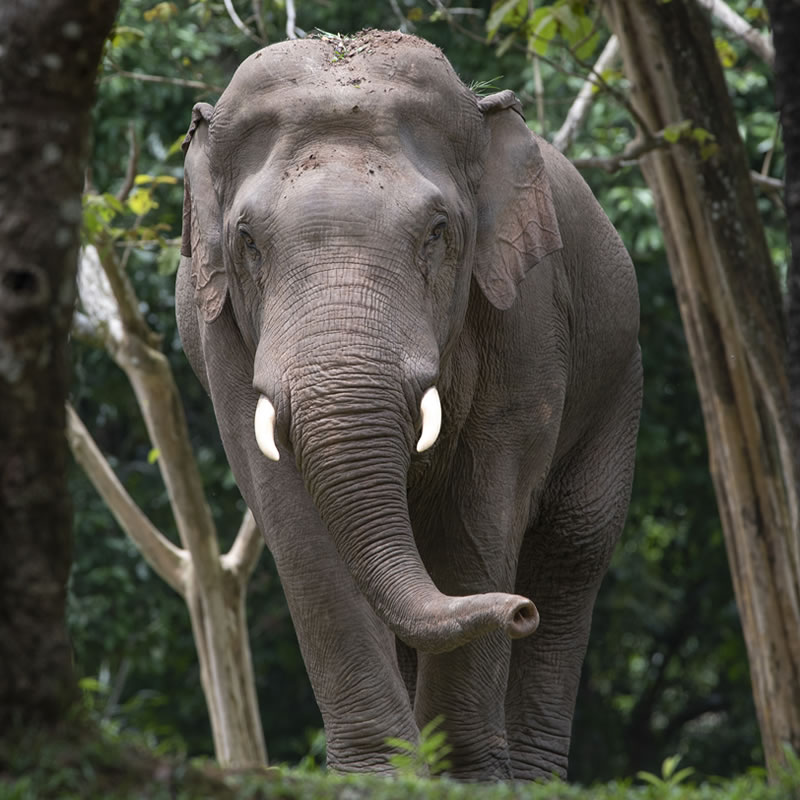
Scientific Name
Elephas maximus
Classification
| Kingdom | Animalia |
| Phylum | Chordata |
| Class | Mammalia |
| Order | Proboscidea |
| Family | Elephantidae |
| Genus | Elephas |
| Species | maximus |
IUCN Redlist Status

Location
Asian elephants are located in India, Sri Lanka, Thailand, Vietnam and other countries in Southeast Asia.
Habitat
Their habitats are generally located in or near forests but they may be found in other types of habitats as well.
Diet
Asian elephants are herbivores, which means their diet consists only of plants. They feed on a variety of plants, including fruit, grasses, tree bark, vegetables and palm leaves.
Size
They range from 7 - 10 feet in height. They can weigh up to 10,000 - 11,000 pounds. This puts them among the heaviest land animals on earth, second only to their close relatives, African elephants.
Description
Asian elephants are "muddy" grey in color, and have very thick, wrinkled skin. They have patches of brown hair on the tops of their heads and backs. Elephants have long, muscular trunks that are used to grab food lying on or growing from the ground. The trunks can also be used for grabbing objects such as branches, or for drinking and spraying water.
Their eyes are located on either side of the trunk. Their ears are much smaller than the ears of African elephants, which is one of the easiest ways to tell the two species apart. Some male Asian elephants have visible tusks, while most females do not.
Asian elephants have relatively short legs when compared to the rest of their bodies, and their knees are wrinkled. The front feet have 5 toenails, and the hind feet have 4.
Behaviors
Asian elephants are able to cool themselves by utilizing their trunk to splash themselves with mud, dust or water. They also will flap their ears to release excess heat.
They are also social animals and often stay in herds. This helps in protection of the elephants, especially newborns. Males will leave the herd after they have matured to a certain point.
Reproduction
The gestation period (pregnancy) of female Asian elephants is about 21 months. They will most often give birth to only one calf.
Other Facts
Asian elephants are endangered due to several reasons. The habitats in which they live are being destroyed by people who then create villages or farms in those areas. Also, the ivory tusks of elephants are valuable to poachers.
In 1989, a global ban on ivory headed by The Convention on International Trade in Endangered Species was signed and helped curb much of the poaching of the elephants.
Asian elephants have been utilized for hundreds or even thousands of years to assist people in moving large or heavy objects, such as trees.
